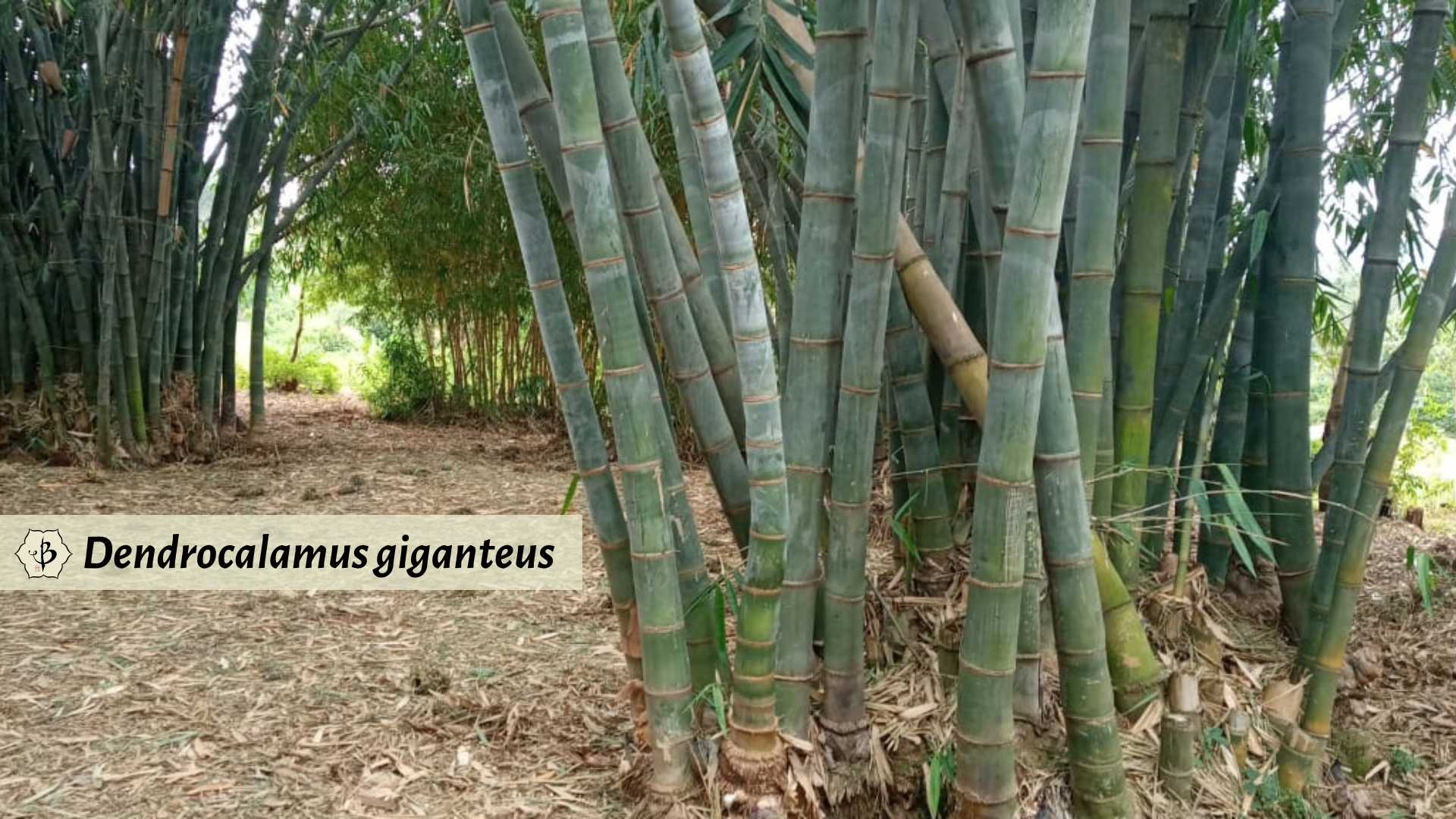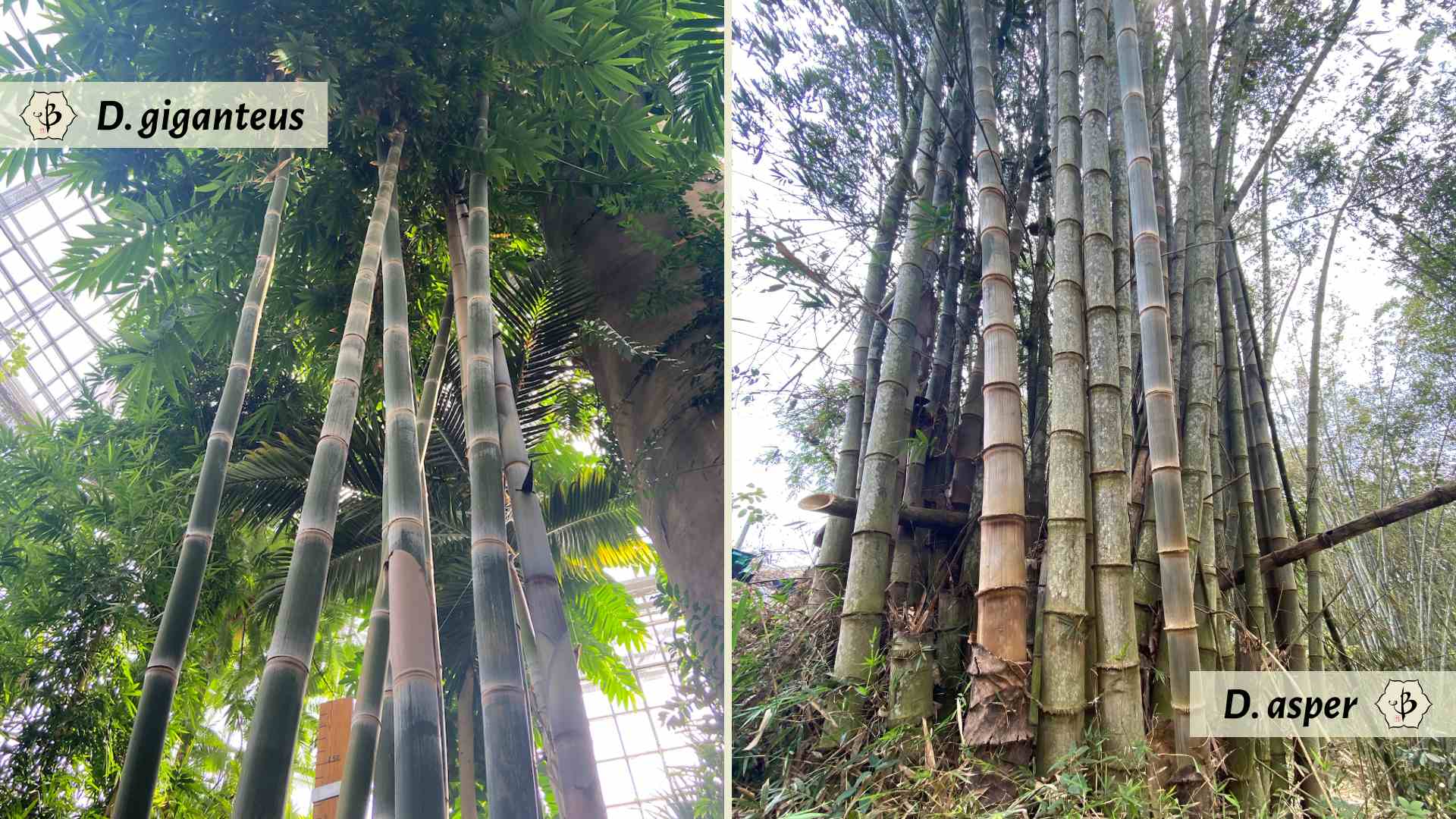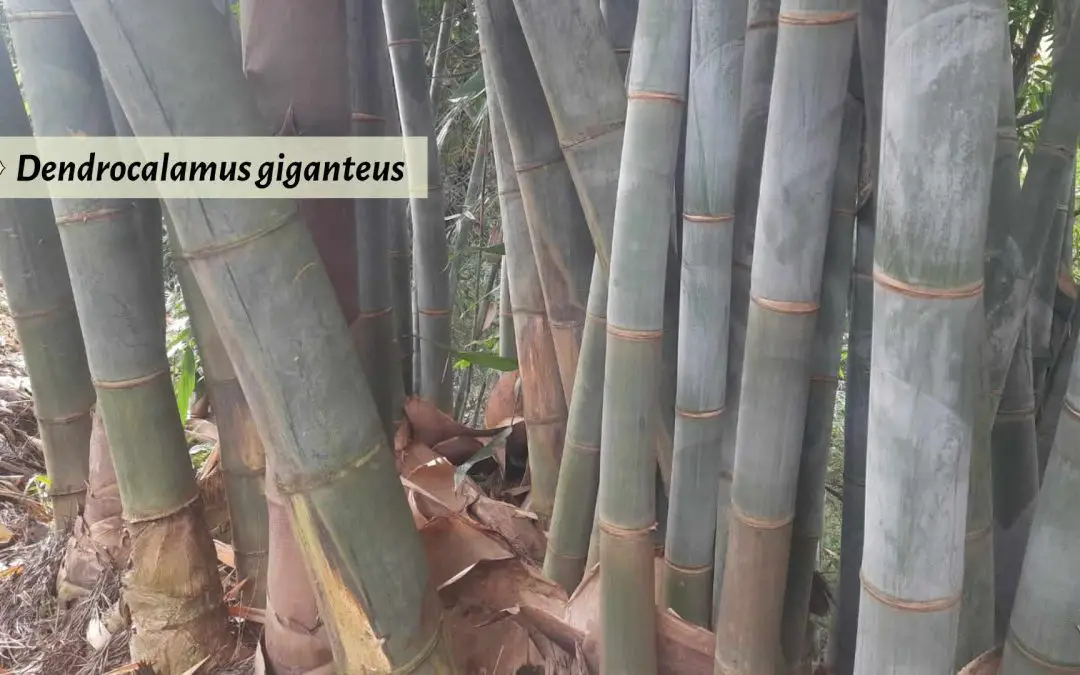Dendrocalamus giganteus is one of the most stunning of all bamboo species. Native to the tropical climes of Indonesia and Southeast Asia, this formidable specimen can often reach more than 100 feet in height, with culms as large as 6 or 7 inches in diameter. The name “Giant Bamboo“ can refer to a wide range of bamboo species, also including Asper and Guadua, but this is the only bamboo with the scientific name Giganteus.

Characteristics of Dendrocalamus giganteus
As the name suggests, the most noteworthy feature of giganteus is its staggering size. Members of the genus Gigantochloa don’t even come close. Unlike other giant bamboo species, such as Dendrocalamus asper and Guadua angustifolia, D. giganteus is especially suitable as an ornamental. The prepossessing culms are smooth and free of thorns.
Like other tropical bamboo, and all varieties of Dendrocalamus, this is a clumping bamboo, and its canes are generally packed together pretty tightly. You don’t have to worry about it spreading the way temperate bamboo does, but you will need to allow it a wide birth. Once fully established, the total footprint can easily cover a diameter of 15-20 feet. To reach its full potential, this bamboo will require tropical conditions. It can survive mild frosts, but they will stunt the plant’s growth and prevent it from growing to full size.

Dendrocalamus asper vs. Dendrocalamus giganteus
The closest relative to Giganteus is Asper, one of the most popular cultivated species for tropical timber. They are similar in size, both in height and thickness. And both species grow without thorns and generally produce no branches on the lower halves of the culms.
The best way to tell these two apart is by the furry nodal joints on Asper. As seen in the image above, Asper is very rough and hairy around the nodal rings, while Giganteus is smooth.
Without a doubt, however, Asper is a superior species for building and construction. Giganteus poles are not nearly as strong and sturdy, lacking the wall thickness of the mighty Asper.
Further reading
To learn more about other exceptional species of tropical bamboo, take a look at some of these in-depth articles.

























